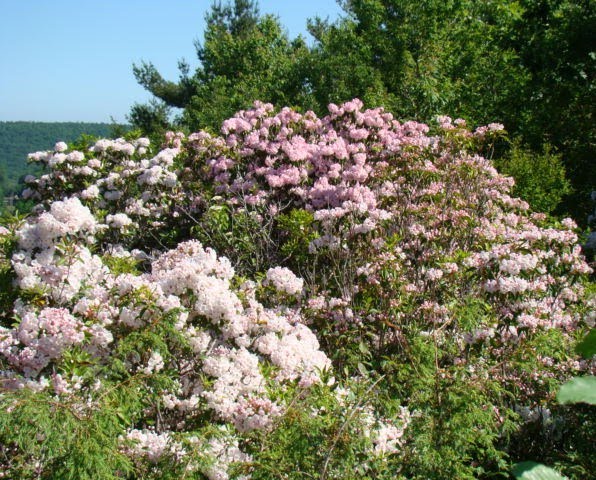
General Information
River Birch is a beautiful, deciduous native tree. Although it doesn’t have the papery white bark of Betula papyrifera, its trunk is gray to black with creamy orange portions and scales that provide a showy, year-round interest. It produces attractive, long thin catkins in spring that hang gracefully from the branches.
River Birch is found in eastern portions of the United States from southern New England south to Florida and west to Kansas and Minnesota.
Plant Habit and Form
River Birch is a medium size tree growing 50 to 70 (sometimes over 100) feet tall. Pyramidal when young, it bears a rounded to irregular shaped crown at maturity. It is a strong tree with a single trunk but can often grow as a multistemmed plant. Its branches have a drooping habit. The leaves are alternate and irregularly oval, about 2 to 5 inches long with toothed margins. They open silvery green, maturing to dark green in summer, then turn golden bronze in fall.

Growing Requirements
River Birch is hardy in zones 4 to 9. It prefers moist river bottom soils but is adaptable to drier soils. It grows in areas of full sun or partial shade. It has a high tolerance of acid soils where it can be dominant. Despite thriving in moist soils, it is only moderately resistant to flooding.
Flowering and Fruiting
River Birch is monoecious with male and female flowers appearing on the same tree. Male catkins form at twig tips in fall and mature in April or May of the following year. The only birch that doesn’t produce fruit in the fall, the fruit matures in late spring or early summer.
Pests and Diseases
Trees are usually free of serious disease but can be bothered occasionally by Anthracnose leaf blight.
ID Tips
Catkins in spring, mostly in 3s. Diamond shaped toothed leaves. Bark gray to black with soft orange scaly bark.

